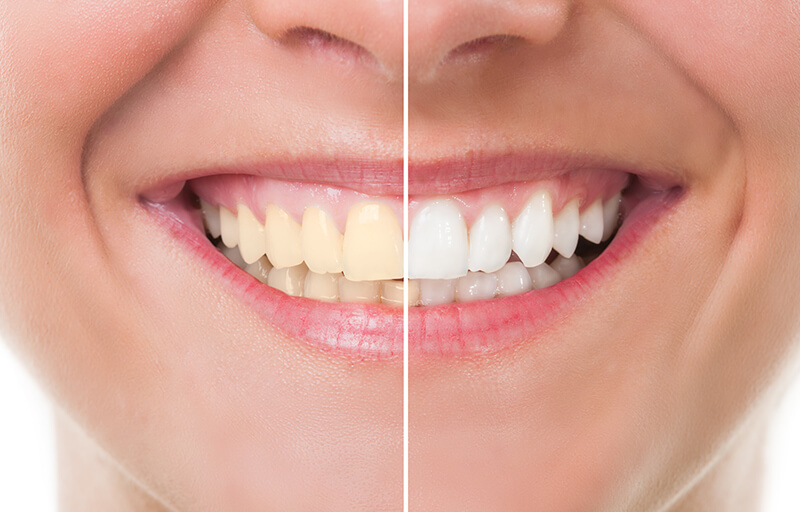Stained teeth can be just as embarrassing as misaligned or disfigured teeth. Even dulled and yellowed teeth may give you pause before readily sharing your smile with others.
But there are ways to overcome staining and restore the natural brilliance your teeth should have. It begins first with finding the true cause for the discoloration and using the appropriate techniques to brighten your smile once again.
Uncovering the Source of Tooth Staining
There are two types of tooth staining—stains that occur on the outside of the tooth (extrinsic) and those that occur from within (intrinsic). Determining the type of staining you have is the first step to brighter, more attractive teeth.
Extrinsic stains happen because of the structure of tooth enamel. While your teeth may feel smooth, the enamel actually contains microscopic depressions. These have a tendency to catch and retain stain-producing substances that come into our mouths. Food or beverages like red wine or tea (with chemicals called tannins) can stain, as well as tobacco. Even substances used for oral hygiene, like the anti-bacterial ingredient chlorhexidine, can stain teeth. Fluoride, a naturally occurring chemical that strengthens enamel against tooth decay, may cause a brownish discoloration if consumed in quantities above recommended levels during tooth development.
You may also have a greater tendency for extrinsic staining if your saliva flow is lower than normal. Among its many properties, saliva helps clear the mouth of food debris after we eat; when saliva levels are too low more food particles remain in the mouth longer, increasing the potential staining effect of these foods.
Intrinsic staining, on the other hand, stems from causes within the tooth. Certain materials used for dental fillings or traumatic tooth injuries can alter tooth color significantly. In some cases, the tooth may not appear discolored viewed by itself, but stands out in relation to nearby teeth with a different shade of color. Antibiotic treatment, particularly tetracycline may also cause intrinsic staining if taken during tooth development.
Restoring Brightness to Stained Teeth
The treatment approach for stained teeth will depend on whether the staining has an extrinsic or intrinsic cause. For some extrinsic staining, changes in diet and lifestyle—like avoiding or limiting foods known to stain or quitting the use of any form of tobacco—will help reduce mild staining. Along with flossing, twice-daily brushing with fluoride toothpaste that contains a whitening agent can remove stain-causing food remnants and add some brightness to your teeth. Twice-yearly visits to your dentist for professional teeth cleaning and polishing can also reduce extrinsic staining.
Teeth whitening (or bleaching) is another option, especially for extrinsic staining that doesn’t fully respond to lifestyle or hygiene changes. Most teeth whitening choices are either home kits you purchase from a drugstore or your dentist, or professional applications by a dental provider. Both types use similar bleaching agents; the chemical concentrations in professional applications, though, are usually stronger, and along with other techniques can produce a brighter result with one session (as opposed to several weeks for home kits). Professional applications will also last longer on average before fading, a year or more if you limit staining foods in your diet and practice consistent hygiene.
While there are actions you can take to diminish extrinsic staining, intrinsic staining is another matter. Only a dentist can perform bleaching techniques for stains originating inside a tooth, since it requires access to the tooth’s interior. One such technique places a bleaching agent in a tooth’s pulp chamber during a root canal treatment before the dentist fills and seals the tooth.
There are also cosmetic restorations that can be used to cover a heavily stained or discolored tooth, regardless of the source. A porcelain veneer, for example, is a thin layer of dental porcelain that’s permanently bonded to the front of a tooth. A veneer is fabricated by a dental technician to exactly match a patient’s normal tooth color, even down to hue gradations along the length of the tooth. Once applied, the veneer masks the stains of the underlying tooth, while color-blending with adjacent teeth.
A veneer and similar restorations may require some permanent tooth alteration before bonding; and while the veneer doesn’t stain, natural teeth near it can, and may need to be whitened occasionally to maintain a balanced color match.
Making the Right Choices for Treating Stained Teeth
If you’re concerned about stained teeth, be sure to visit your dentist first—knowing whether the discoloration comes from causes outside the tooth or within it will put you on the right treatment track, as well as save you possible disappointment and unnecessary expenses.
Your dentist is also your best source for advice on what types of treatments will work best for you and the costs involved. Knowing all the facts will help you make the right choices to brighten—and reinvigorate—your smile.

 Login
Login